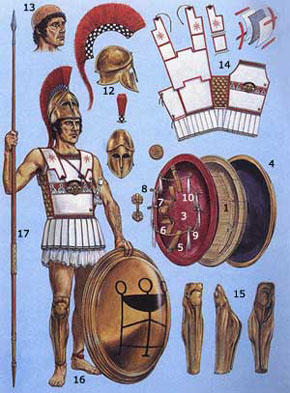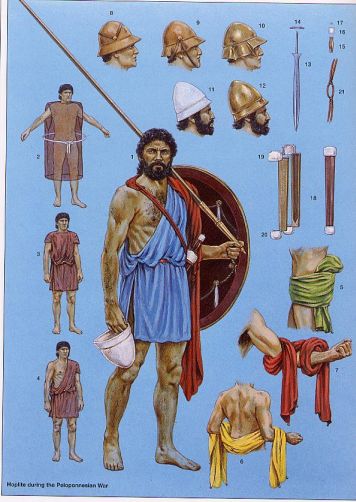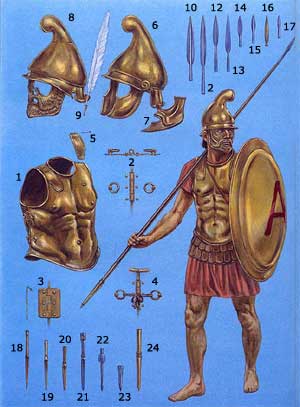|
Hoplite equipment |
||||||||||||||||||||||||||||||||||||||||||||||||||||||||||||||||||||||||||||||||||||||
|
Hoplite equipment lightened in the second half of the century, the tunic is now an exomis (2,3,4) that replaced the chitoniskos. Another garment was the ephaptis a kind of shawl often wrapped around the forearm (5,6,7). In place of the closed helmet he wears a pilos felt hat , this shape was also copied in bronze (11,12). This type of helmet probably originated in Laconia. During the campagn on Sphacteria in 425 BC the Lacedaemonians suffered from the poor protection of the pilos helmet from arrows. You will notice that cuirass and greaves have been abandoned. The reasoning for the lightening of the hoplite equipment by the Lacadaemonians in particular during the Peloponnesian war would have been the increased use of light troops by their enemies and the need for the younger hoplites to be more mobile. The Lacedaemonians would often use the tactic of getting the younger men in the front ranks to attempt to catch the enemy light troops much like police snatch squads at demonstrations. The Boeotian helmet was also derived from a travelling hat and was used by cavalry as well as infantry (8,9,10). As the hoplite line became deeper and cohesion became more important than mobility the trend towards a 'light' hoplite was reversed in the 4th century to a more armoured soldier and a lengthening of the spear.
(c) Osprey Publishing |
|||||||||||||||||||||||||||||||||||||||||||||||||||||||||||||||||||||||||||||||||||||


